Tag: Canary Islands
The Standing of the Stones Spring ’22 Edition
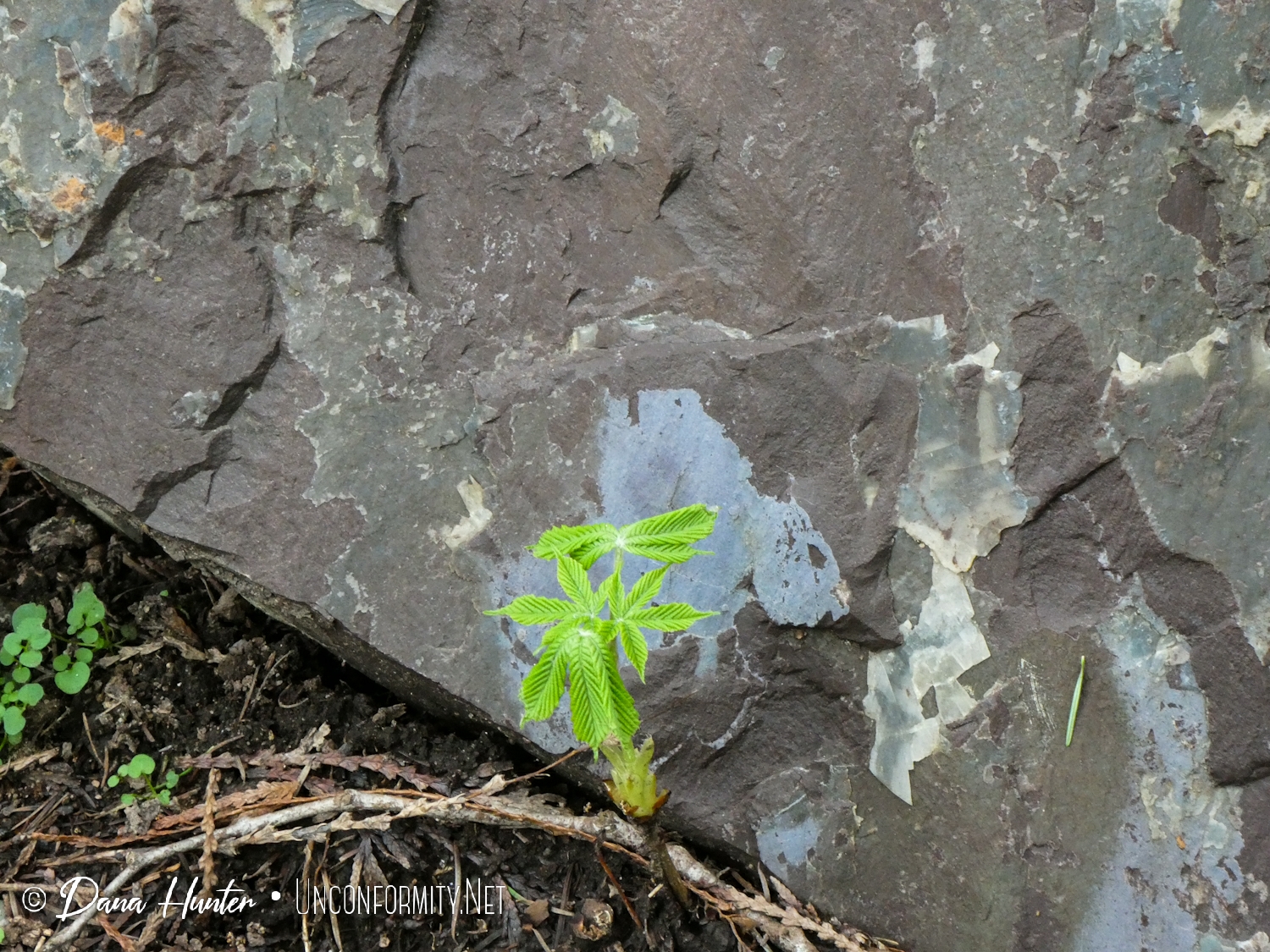
(A version of this post first appeared on Patreon. To get early access, plus nifty extras, all while supporting Rosetta Stones, please click here.)
Yeah, it has been a long time since I wrote something substantial, hasn’t it? Even Women’s History Month passed without a peep. Both work and my poor teeth exploded, so it’s been a few months of ending up too drained to word properly while I take care of those matters. Thank you so much for sticking with me regardless. It’s about to get good and earth sciency around here.
I haven’t been completely idle: I’ve been researching Marguerite Thomas Williams, the first African American to earn a PhD in geology. Dozens of articles are out there about her. Precisely none contain any of her words. They list off the same few facts, mostly, which tell us some important and interesting things about her, but don’t give her a living memory. She feels remote, removed, like we’re viewing a damaged newsreel from the back of a theater with a moth-eaten screen and a failing projector. Some of the facts given are there to try to illustrate how unique she was, but they’re wrong: she wasn’t born in the Reconstruction era, in fact was nearly twenty years too late. Even the photo many use to portray her isn’t actually her.
The Year in Volcanoes at Rosetta Stones
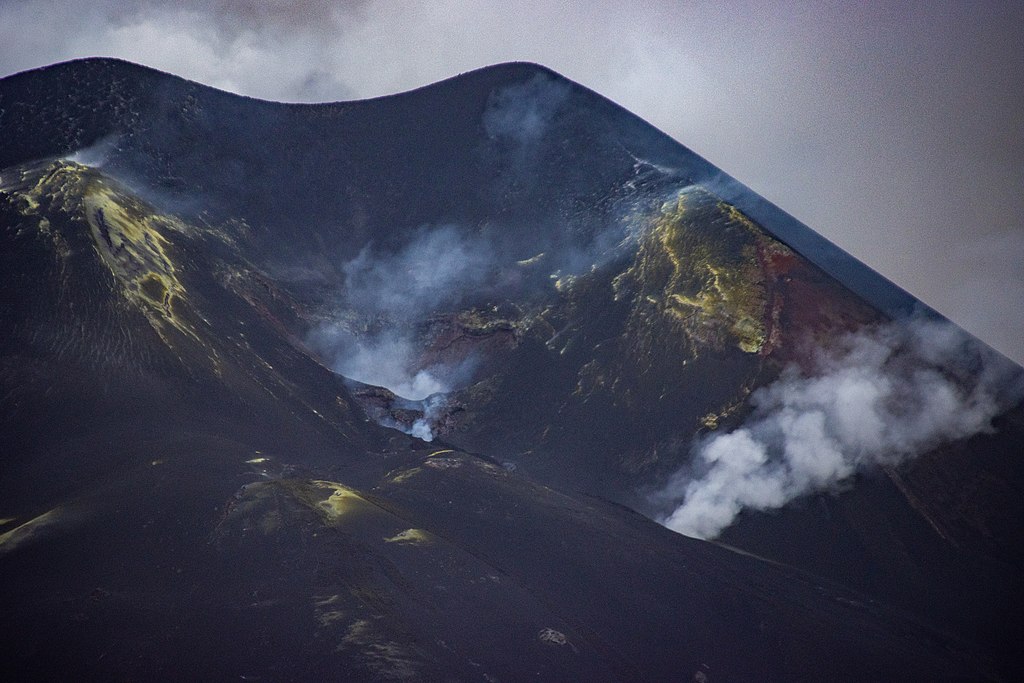
2021 was an excellent year for eruptions that were fascinating to watch and not terribly dangerous to humans! Let’s look back on the eruptions we covered, and see where they are now, and what might be in store for 2022.
Kilauea, United States
Tūtū Pele has celebrated the last couple of New Years with sweet summit eruptions. From late December 2021 through most of May of 2021, we were treated to a spectacular end to the water lake in the crater and entertained by the dancing islands of the new lava lake. Pele took the summer off before abruptly returning on September 29th. She’s been putting on a crater lava show ever since, with just a few breaks, including a pause over Christmas. By the new year, she was back in action and put on a lovely show over the holiday.
Since Pelee’s only taken one year off since the 1980s, I’m expecting this year to include some gorgeous lava action from her current home. And stay tuned to see if she does any remodeling at Mauna Loa!
Geldingadalir (Fagradalsfjall), Iceland (more…)
Why La Palma is Like This vol. I: The Seamount that Soared
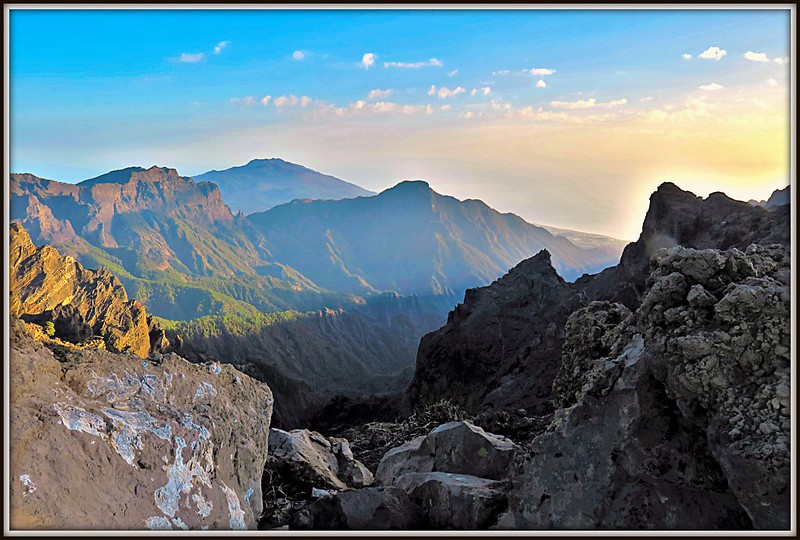
This post first appeared on Patreon. To get early access, plus exclusive extras, please visit my Patreon page.
Now that we’ve got the geologic context of the Canary Islands as a whole figured out, it’s time to zero in on La Palma. How did she get here? Why are all the recent eruptions happening only on one half of her? What might be in store for the future? Does the fact that the most recent eruption is the longest and most voluminous of her entire recorded history mean the island is doomed? And is her active volcanic ridge, Cumbre Vieja, going to fall into the ocean and wipe out the East Coast of North America?
(I won’t keep you in suspense on that last one: the answer is almost certainly a resounding no. So while we’ll talk a bit about former collapses that have shaped the island, we won’t be spending any time on the megatsunami theory. Sorry not sorry.)
A Brief History of La Palma
La Palma is the second-youngest Canary island, and is still growing. She is, in fact, the most vigorously volcanic of the Canary Islands, boasting the most eruptions on record since the Spanish settlers arrived. And that’s just the last 500-ish years of her history: she’s actually about four million years old, if you count from her birth as a bouncing baby seamount. Nearly all of those years involve very hot rocks. (more…)
Standing of the Stones: Island Volcanoes Abounding Edition
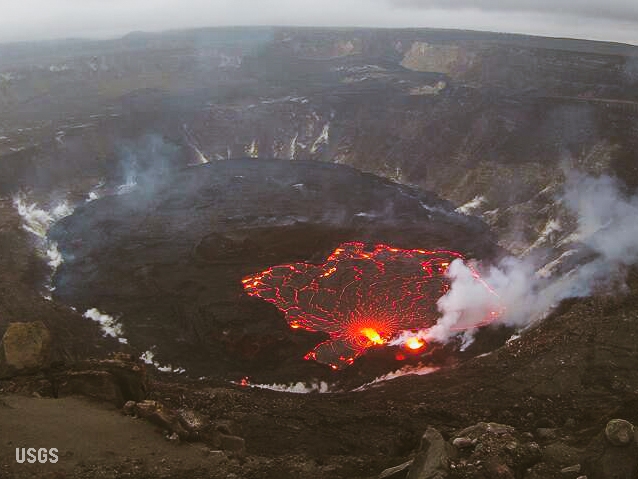
Hello and welcome to a new, semi-weekly feature in which I’ll share snippets of earth science news, cool things I’ve stumbled across, pretty pictures, status reports on upcoming articles, and whatever else seems interesting.
La Palma: Still on Fire
This has been one of the longest eruptions in La Palma’s recorded history, and is posed to be the longest, if it keeps going. Some of the recent lava fountains have exceeded 1,600 feet (500m) in height. The person who runs the GeologyHub channel has discovered a pattern in the data that suggests something interesting (and ominous to the locals) about the relationship between deep earthquakes and eruption activity on the island.
Can you believe where some of that ash ended up?!
It looks like the eruption may break some records. Interesting times indeed.
Why Is La Palma Like This?
Why the Canary Islands are Like This
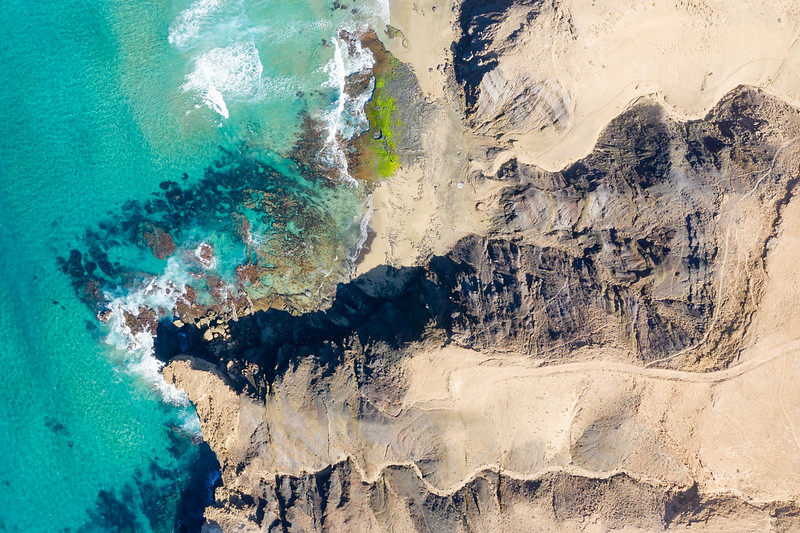
This post first appeared on Patreon. To get early access, plus exclusive extras, please visit my Patreon page.
The current eruption on La Palma in the Canary Islands is now over a month old. Already the island’s largest in a hundred years, it’s giving no signs of stopping just yet. Volcano lovers have thrilled to its spectacular Strombolian explosions. Residents have endured disruption, displacement, and loss of homes and livelihoods. Dogs trapped by lava flows had to be fed by drone before they were taken to safety in a daring and mysterious rescue. Living with a live volcano is far from easy and seldom safe.
Plenty of news agencies, vloggers, and blogs are keeping us up to date on the progress of the current eruption. I’m going to take us deep into the past, on a journey into the island’s origins and evolution. We’re going to see the slow, steady pas de deux between a mantle plume and the plate above it. We’ll watch underwater volcanoes go subaerial, building new land, and see catastrophic collapses tear their confections down. We’ll learn the life stages of a Canary Island, and by the end, we’ll know the broad outlines of La Palma’s destiny.
In the end, we’ll see that this current eruption is as much an act of creation as it is destruction.

Mirador de La Tarta, Tenerife. Yes, it’s literally called a cake! The white layer is pumice, the black layers are basaltic scoria, and the reddish-brown layers are oxidized basaltic tephra. Credit: H. Zell (CC BY-SA 3.0)
The Lowdown on LAZE: La Palma Eruption’s Most Recent Hazard
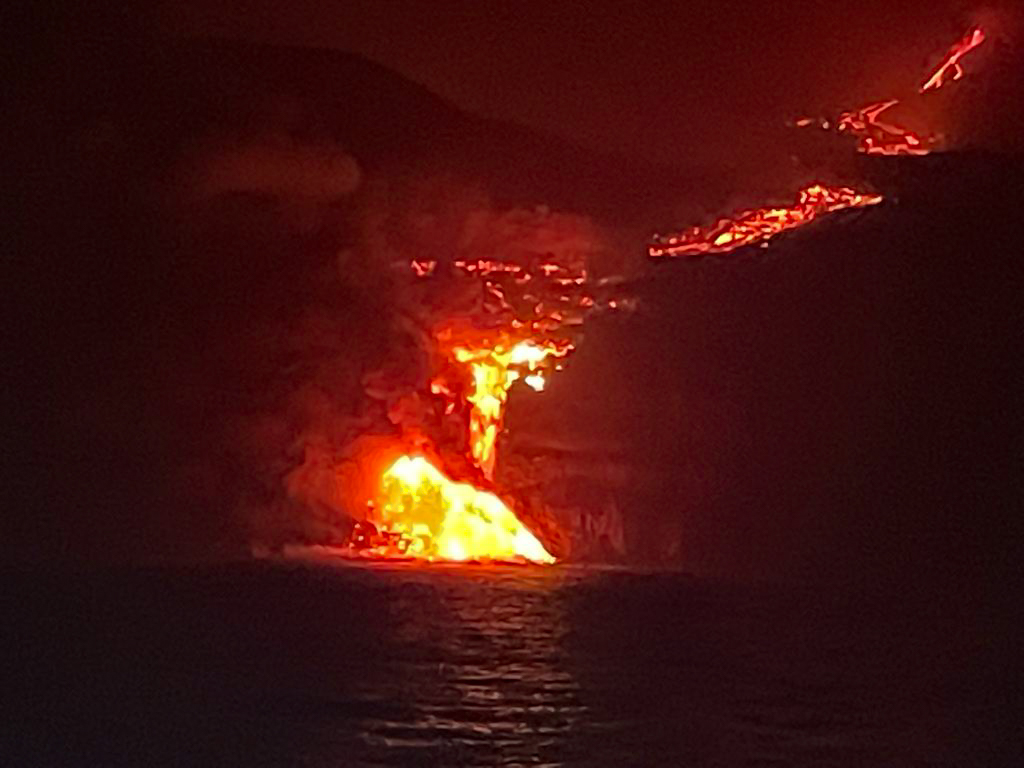
The lava flow from La Palma’s ongoing eruption has reached the Atlantic Ocean. The news is full of people talking about how hazardous this is: you can get all kinds of explosive interactions between water and molten rock. There’s also the little matter of LAZE. Now seems like the perfect time to bring you this article, first published at Scientific American Blogs, telling you what to expect from those dense white plumes.
And I’d also like to take this opportunity to remind you why it’s a terribad idea to sail too close to an ocean entry. Keep your distance!
Kilauea’s most recent lava flows reached the sea over the weekend, and they’ve been beach bumming ever since. Few things are as dramatic as molten rock contending with seawater. We’ll be talking about all the neato things that are happening and that we may see if the eruption continues. We’re starting with LAZE, which in this case isn’t something you do on a hot summer afternoon. It’s this:

A dense LAZE plume rises from the Pacific Ocean during Kilauea’s 2018 eruption. Credit: U.S. Geological Survey
When blazing hot lava meets seawater, the interaction between them boils the water and produces enormous plume of mist, called LAZE (lava haze). These plumes are, of course, mostly water vapor, but they are so much more than that. They’re acidic beasts carrying appreciable amounts of hydrochloric acid, hydrofluoric acid, sulfate anion, carbon dioxide, and nitrogen dioxide, plus traces of volcanic glass and other particles. Even if you could find a safe place near where the lava is pouring into the ocean, you wouldn’t want to be hanging out there without industrial-grade protection.
Sounds super scary, right? Well, it’s concerning. But don’t panic. It, like so many of Kilauea’s other dangers, is something you can protect yourself against with a little common sense and caution. And it’s really pretty neat. (more…)
La Palma Eruption: Video Updates
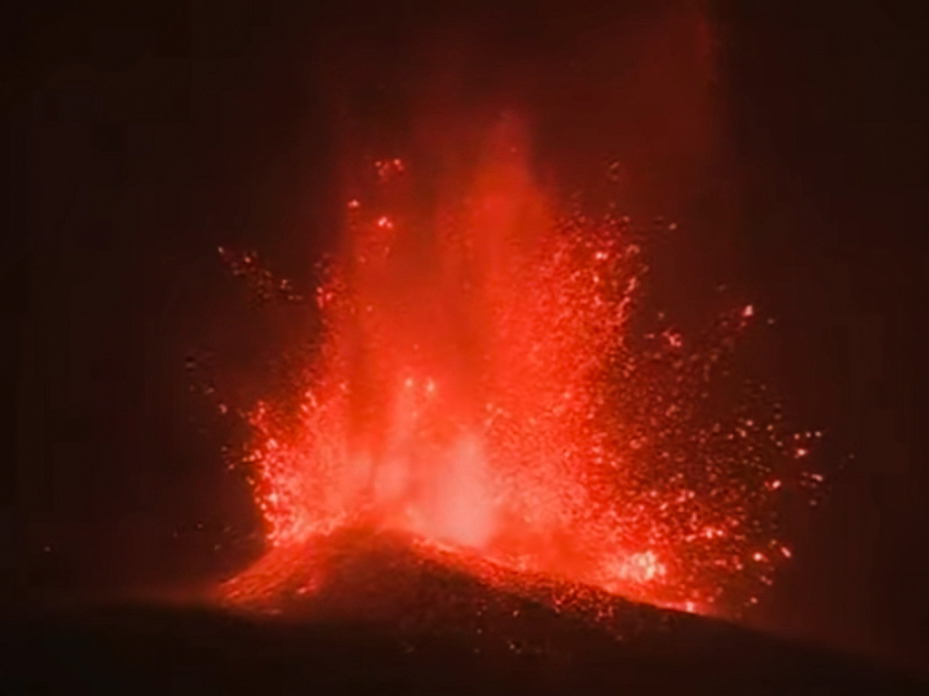
I’m cooking up a great series of posts for you on the geologic context of La Palma, the seismic signs of this eruption, and the eruption itself, plus human efforts to control lava flows. But I had to pause to show you this wonderful trio of videos from Geology Hub, which not only include information on the ongoing eruption, but have some incredible clips. Plus, a Canary Islands bonus volcano!
Here’s an update from a couple of days ago, while new fissures were opening and the volcano was still in a largely Hawaiian-type eruptive style.
Many people seem to love to jump on the slightest easing of eruptive activity to declare that the eruption is obviously not going to last for a long time and it’s just about to end. Those people get heartily laughed at by eruptions, which frequently wax and wane and wax again many times through the course of an eruption that will last weeks, months, or years. The new La Palma volcano is certainly having a good snicker as it shifts to Stombolian activity and increases in vigor. Personally, I think it’s going to be with us for months, if not years.
Watch closely, and you’ll see an urban kipuka in one of the shots. I’m so glad these flows are slow enough for people to get to safety before their homes and towns are destroyed. And so far, it seems that Canary Islands officials have been doing a good job listening to what the volcano is telling them and ensuring folks can get out of harm’s way. (more…)
La Palma Erupts: A Video Chronology
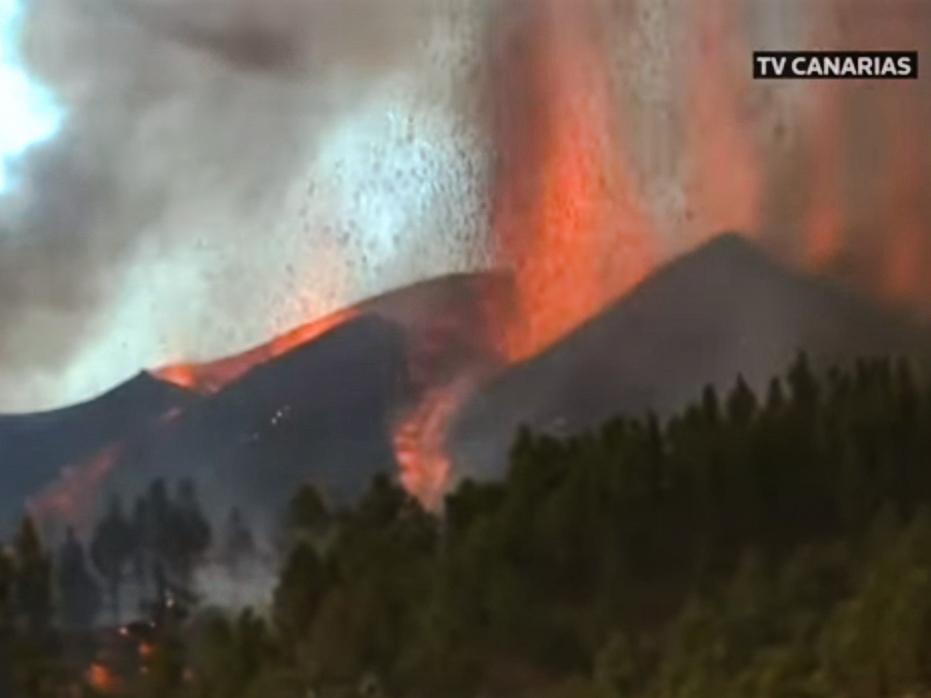
One thing is true about living on an active volcanic island: your gamble with lava is probably a losing bet. The people of La Palma just got a rather spectacular reminder on Sunday that the volcano always wins.
That’s the bad news. The good news: volcanoes, unlike earthquakes, usually give us adequate notice as to what’s coming.
La Palma got just over a week’s notice that something was up, and increasing seismicity warned authorities to begin evacuations before the eruption began. Livestock and people with disabilities were removed from the danger zone early; thousands of other residents were hurried to safety after the fissure first opened and the eruption began. (more…)
Mary Horner Lyell: “A Monument of Patience”

You never hear of the other Lyell. Sir Charles, you know quite well: he set the infant science of geology firmly on its feet and inspired Charles Darwin. But there’s another Lyell who was a geologist, and without her, Charles Lyell would have found his work far more difficult, if not impossible. When he married Mary Horner, he pledged himself to a lifelong scientific partner.
Why don’t we know her?
